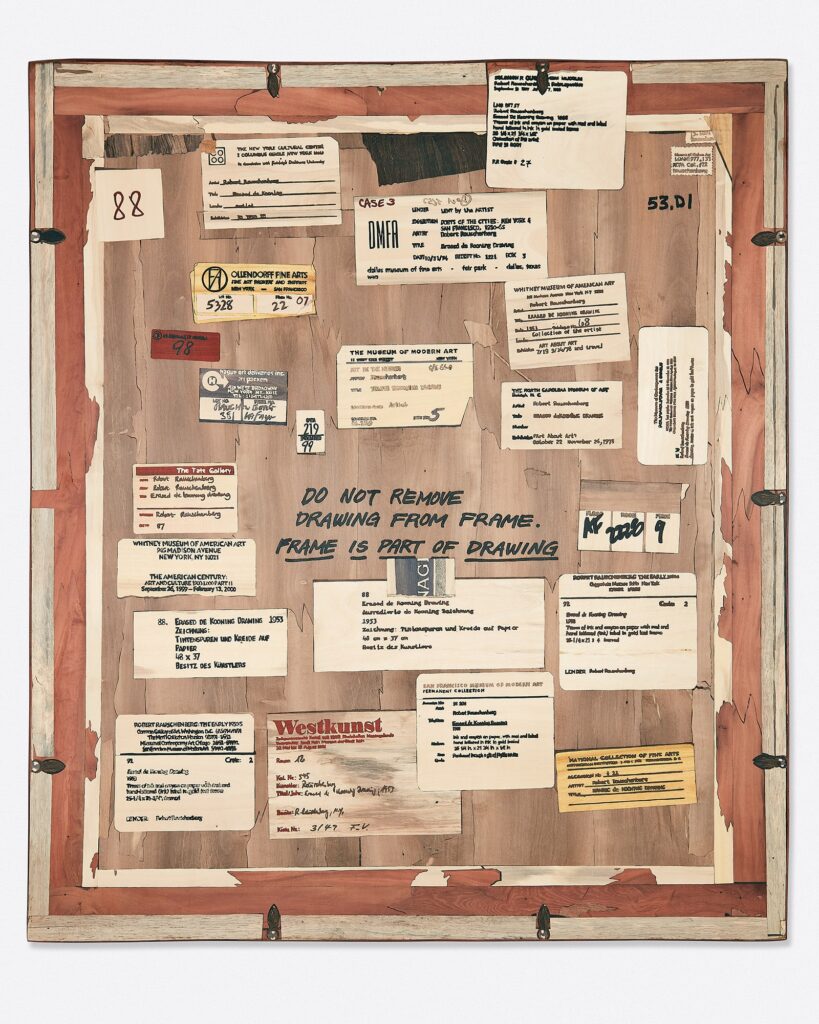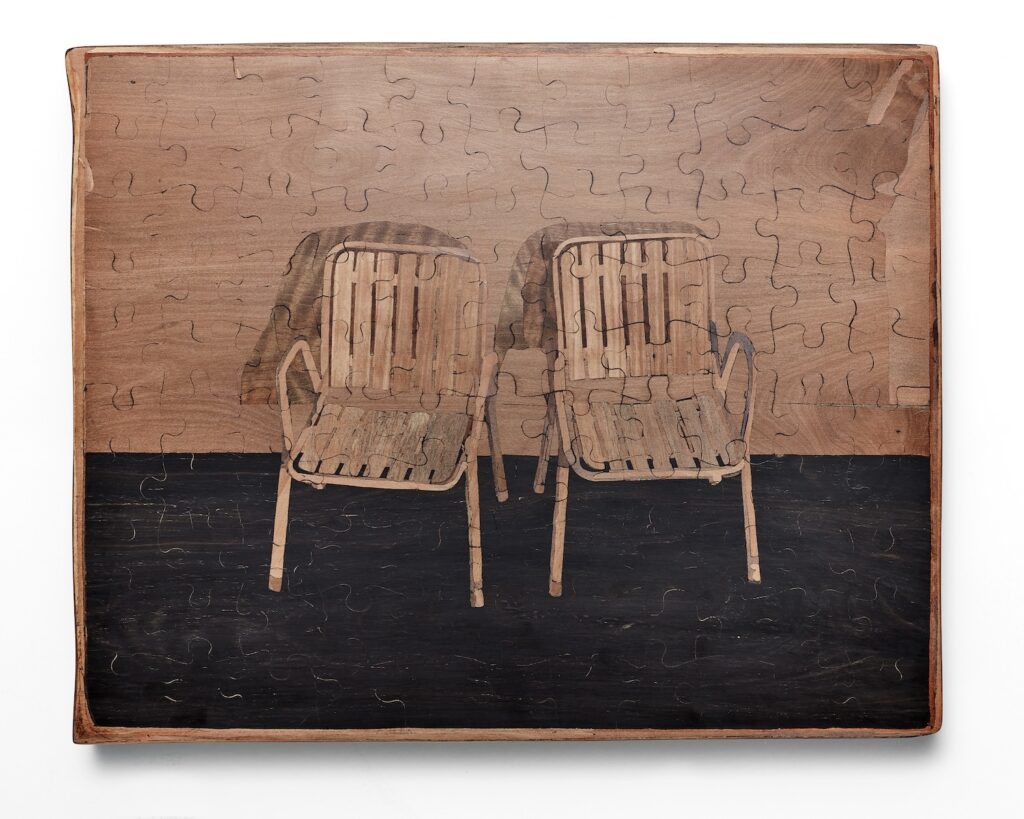At first glance intarsia is strange medium for portraiture, for immediacy, or for conveying information at all. But that is looking at it through the wrong end of the chronoscope. In his current show at New Discretions, I Want Your Skull, Michael Bühler-Rose uses this permanent—or at least persistent—medium to transform temporal and subjective content into objects for history.

The large, multi-panel studiolo scene is familiar, partly because it consciously evokes the intarsia room-as-portrait of the 15th century Studiolo Gubbio at the Met, but also because Bühler-Rose has lately shown similar studiolo selfies, with different configurations of autobiographical objects.
The other three works feel like they’re doing something different. The one that caught my eye on Instagram [I have not seen the show irl yet] is the museum sticker-covered verso of Rauschenberg’s Erased de Kooning Drawing. As someone who’s been enthralled by the underseen backs of famous artworks—including this one—this feels like using intarsia’s excessive intricacy to right a historical wrong.

The other two works are the verso of a small Dali painting, and the front of a Felix Gonzalez-Torres puzzle, complete with puzzle pieces and plastic bag. Besides their relatively small scale, the main connection I see here is that both the artworks referenced sold at Christie’s in mid-May 2024. So intarsia turns a moment in time into timeless objects.
But maybe I’m overly fixated on differences when one clear similarity is right. there. Because all four works in Bühler-Rose’s show are based on photographs. The studiolo is self-evidently a composed still life. The Rauschenberg’s verso photo is a key part of its art historical record. The Felix puzzle is itself a transformation of a snapshot into an object, whose photograph is transformed in turn. And Dali’s verso picture, cropped for its inlay version, only turned up because the painting came up for sale. So photography put through its theorized paces.
And unlike other any other printing—or production—techniques, these photos have been fixed in a form we know could last 500 years, because it already has.
[A few hours later update: Bühler-Rose’s unparalleled side hustle, https://boot.foundation, will be having a bootlegs and books popup at Situations this Sunday, October 6th, from 12-6. A reminder to always check insta before posting.]
I Want Your Skull is at New Discretions at Situations’ 127 Henry Street location through 20 October 2024 [newdiscretions]
Studies for Studiolo, 2019 — [michaelbuhlerrose.com]
Studiolo Gubbio, c.1478-82 [metmuseum.org]
